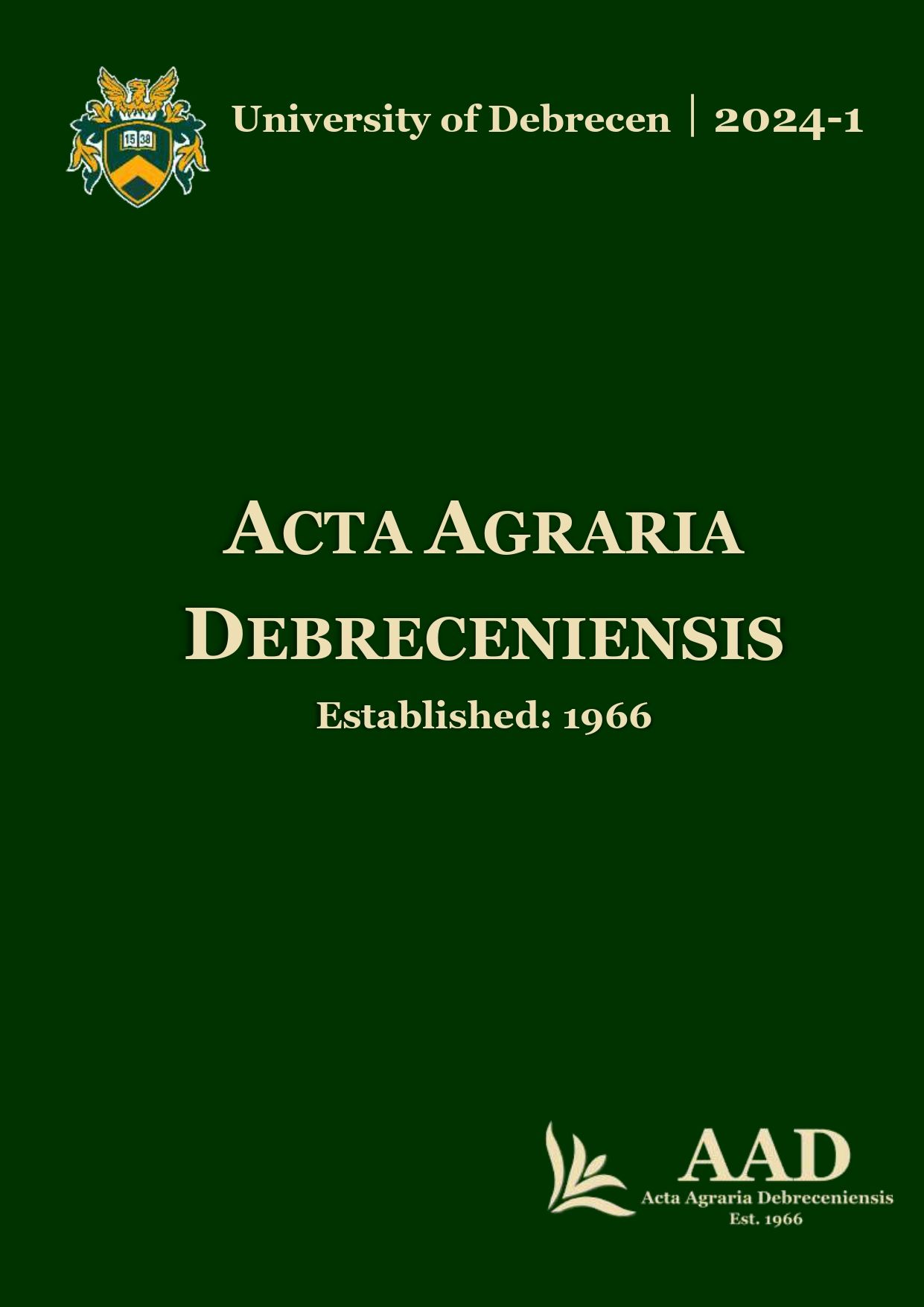The effect of different sowing depth on the yield and yield-forming elements of maize
Authors
View
Keywords
License
Copyright (c) 2024 by the Author(s)

This work is licensed under a Creative Commons Attribution 4.0 International License.
How To Cite
Accepted 2024-03-25
Published 2024-06-03
Abstract
On a global scale, maize is an important food, feed and industrial crop, with an increasing production area (Nagy, 2007 and 2021). Among the environmental impacts, extreme weathering factors caused by climate change are causing serious problems for crop stability, and maize is no exception.
Precision farming is today's most innovative agrotechnical approach, which can greatly increase crop safety and reduce costs by exploiting the genetic potential of our soils and the hybrids we use (Torres, 2012).
Sowing is one of the most important agrotechnical elements, and with good seeding we can ensure that we have all the requirements of a high yielding, high growing crop (Pepó, 2019). In the case of sowing, it is important to place the seed in moist soil to provide the optimum environmental conditions for the crop to ensure uniform emergence (Széles et al., 2020; Shrestha et al., 2018).
Precision planting is the market leading technology in precision planters in the United States, and when cooperating with them we looked for methods to optimise the depth of sowing and to monitor the effect on yield by studying the initial development of the plants. The seeder was equipped with the company's SmartFirmer soil scanner integrated into the seed drill. Automatic seed depth adjustment based on soil moisture is an exceptional solution for uniform emergence and drought protection.
References
- AKREA (2023): https://www.akrea.hu/ternekek accessed 27.02.2023.
- Bocz, E.; Kováts, A.; Ruzsányi, L.; Szabó, M. (1992): Kukorica. 362-418. In: Szántóföldi növénytermesztés: (Ed. Bocz, E.; Késmarki, I.; Kováts, A.; Ruzsányi, L.; Szabó, M.) Mezőgazda Kiadó, Budapest. 887 p.
- Csajbók, J. (2019): Silókukorica. In: Integrált növénytermesztés 2. Alapnövények: (Ed. Pepó, P.) Mezőgazda Lap- és Könyvkiadó, Budapest. 359 p. 316–319.
- Csajbók, J.; Kutasy, E. (2015); Changes in water use efficiency and photosynthetic parameters of maize. induced by abiotic stress factors, Növénytermelés 64. supp. 2. 17–24.
- EPRS (2016): Precision agriculture and the future of farming in Europe. Scientific Foresight Study, IP/G/STOA/FWC/2013-1/Lot 7/SC5, December 2016 http://www.europarl.europa.eu/RegData/etudes/STUD/2016/581892/EPRS_STU(2016)581892_EN.pdf (2022. 10. 18.)
- Gaál, M.; Kiss, A.; Péter, K.; Sulyok, D.; Takácsné György, K.; Domán, Cs.; Illés, I.; Keményné Horváth, Zs. (2017): A precíziós szántóföldi növénytermesztés összehasonlító vizsgálata. Agrárgazdasági Kutató Intézet, Budapest. 170 p.
- Hagymássy, Z. (2019): Korszerű gépesítési megoldások. In: Integrált növénytermesztés 1. Általános növénytermesztési ismeretek: (Ed. Pepó P.) Mezőgazda Lap- és Könyvkiadó, Budapest. 336 p. 191–204.
- Illés, Á.; Bojtor, C.; Szabó, A.; Nagy, J. (2022): Eltérő agrotechnikai paraméterek hatása a különböző kukoricahibridek kelésdinamikai és termésparamétereire szántóföldi tartamkísérletben. Növénytermelés. 71. (1). 21–32.
- Nagy, J. (2007): Kukoricatermesztés – Élelmiszer – bioenergia - takarmány. Akadémia Kiadó, Budapest. 394 p.
- Nagy, J. (2021): Kukorica – A nemzet aranya. Élelmiszer, takarmány, bioenergia. Szaktudás Kiadó, Budapest. 516 p.
- Pepó, P. (2019): Vetéstechnológia. In: Integrált növénytermesztés 1. Általános növénytermesztési ismeretek: (Ed. Pepó, P.) Mezőgazda Lap- és Könyvkiadó, Budapest. 336 p. 262–266.
- PRECISION PLANTING (2023): https://www.precisionplanting.com/agronomy 2022 Letöltve: 2023.02.27.
- Sárvári, M. (2005): Agrotechnikai tényezők hatása a kukorica adaptációs képességére és termésbiztonságára. In: Kukorica adaptációs képességének és termésbiztonságának javítása: (Ed. Nagy, J.) Debreceni Egyetem Agrártudományi Centrum, Debrecen. 183–203.
- Sárvári, M.; Futó, Z. (2000): Összefüggés a kukorica hibridek vetésideje, produkciója és a betakarításkori nedvességtartalma között csernozjomtalajon. Debreceni Egyetem Agrártudományi Közlemények. 1:32–41.
- Shrestha, J.; Kandel, M.; Chaudhary, A. (2018): Effects of planting time on growth, development and productivity of maize (Zea mays L.). Journal of Agriculture and Natural Resources. 1. 1:43–50. https://doi.org/10.3126/janr.v1i1.22221
- Széles, A.; Huzsvai, L. (2020): Modelling the effect of sowing date on the emergence, silking and yield of maize (Zea mays L.) in a moderately warm and dry production area. Agronomy Research. 18.2: 579–594. https://doi.org/10.15159/ar.20.161
- Torres, G.M. (2012): Precision planting of maize (Zea mays L.). Oklahoma State University, 2012.
- Zelenák, A.; Szabó, A.; Nagy, J.; Nyéki, A. (2022): Using the CERES-Maize Model to Simulate Crop Yield in a Long-Term Field Experiment in Hungary. Agronomy. 12. 785. https://doi.org/10.3390/agronomy12040785

 https://doi.org/10.34101/actaagrar/1/12560
https://doi.org/10.34101/actaagrar/1/12560